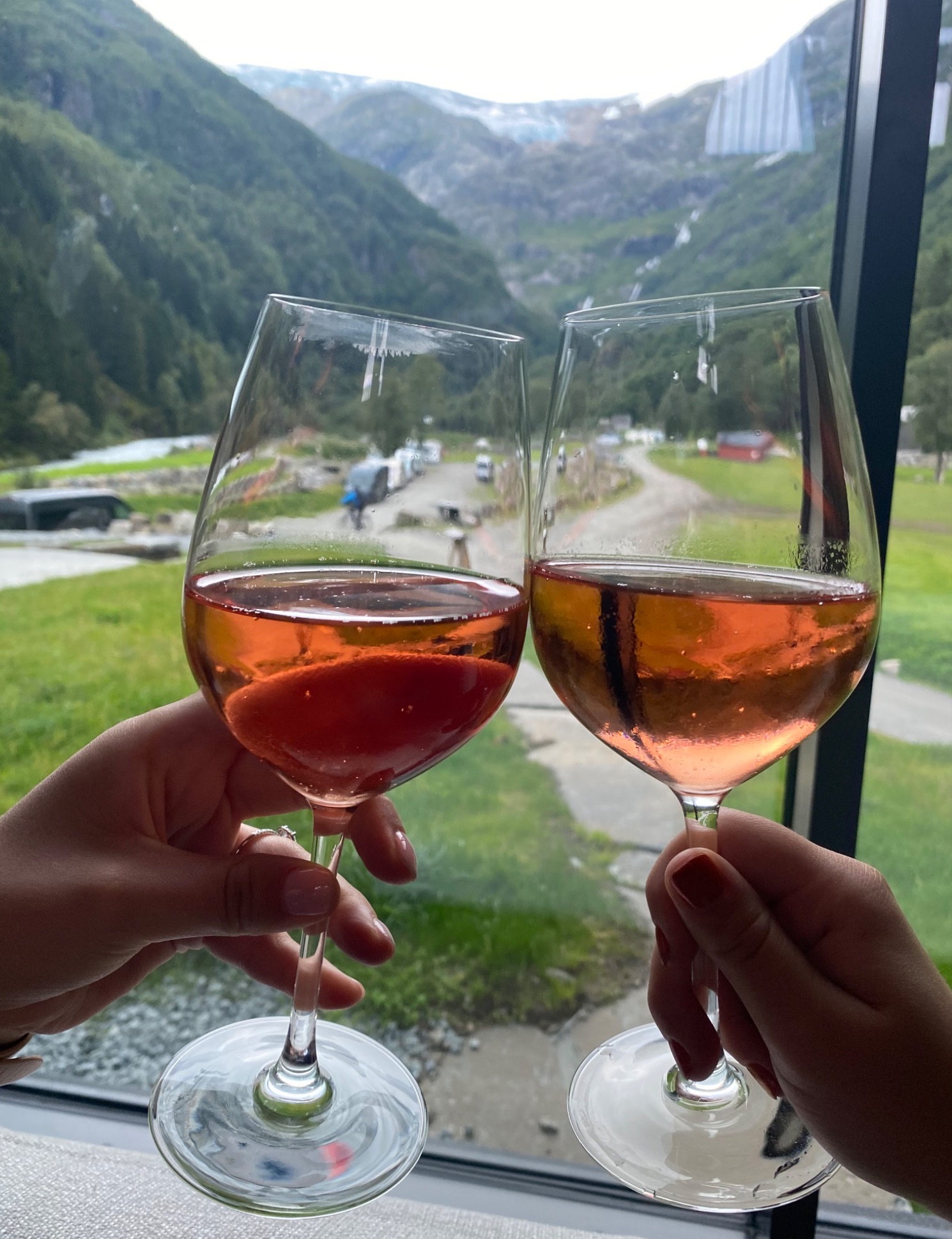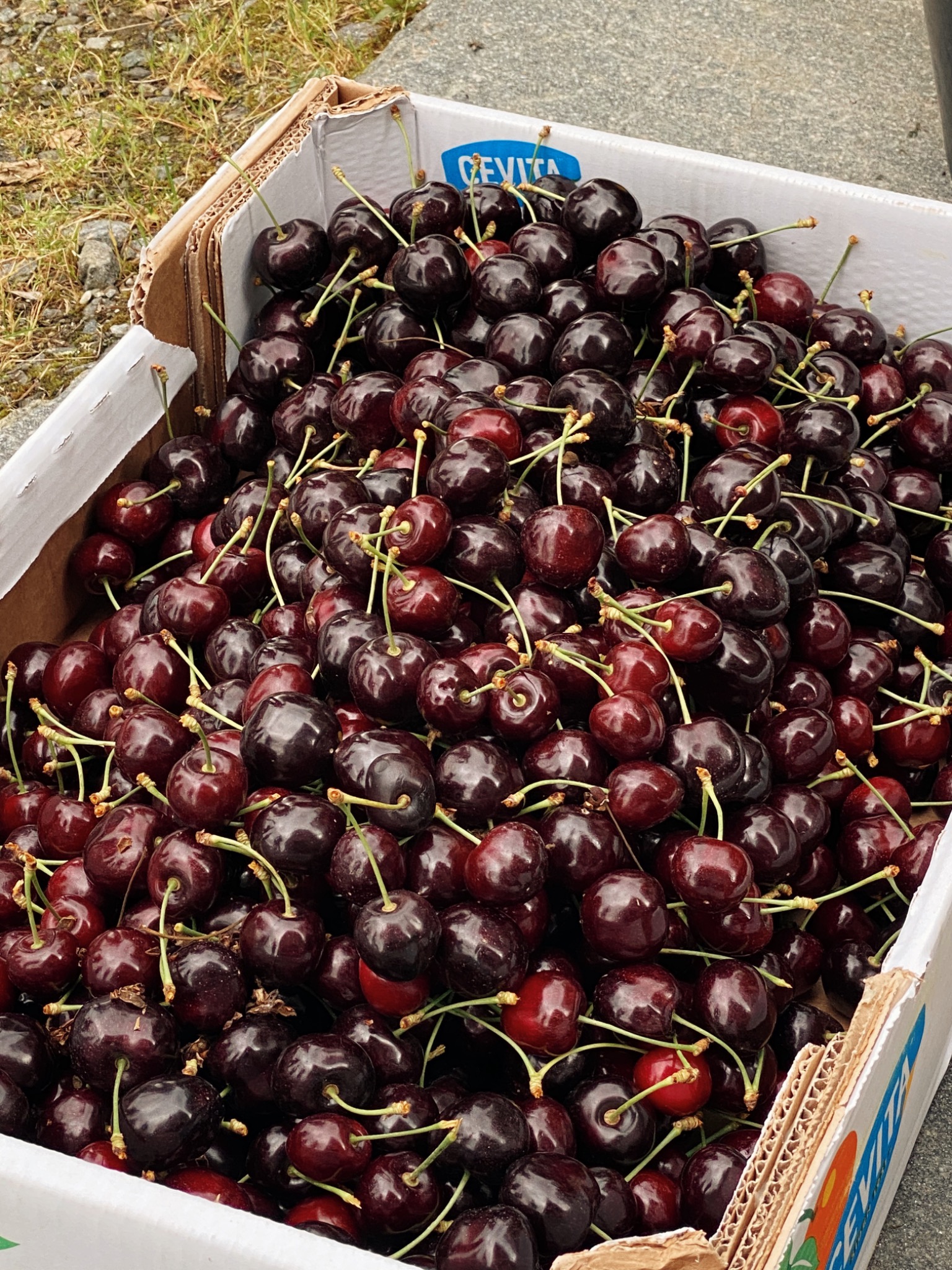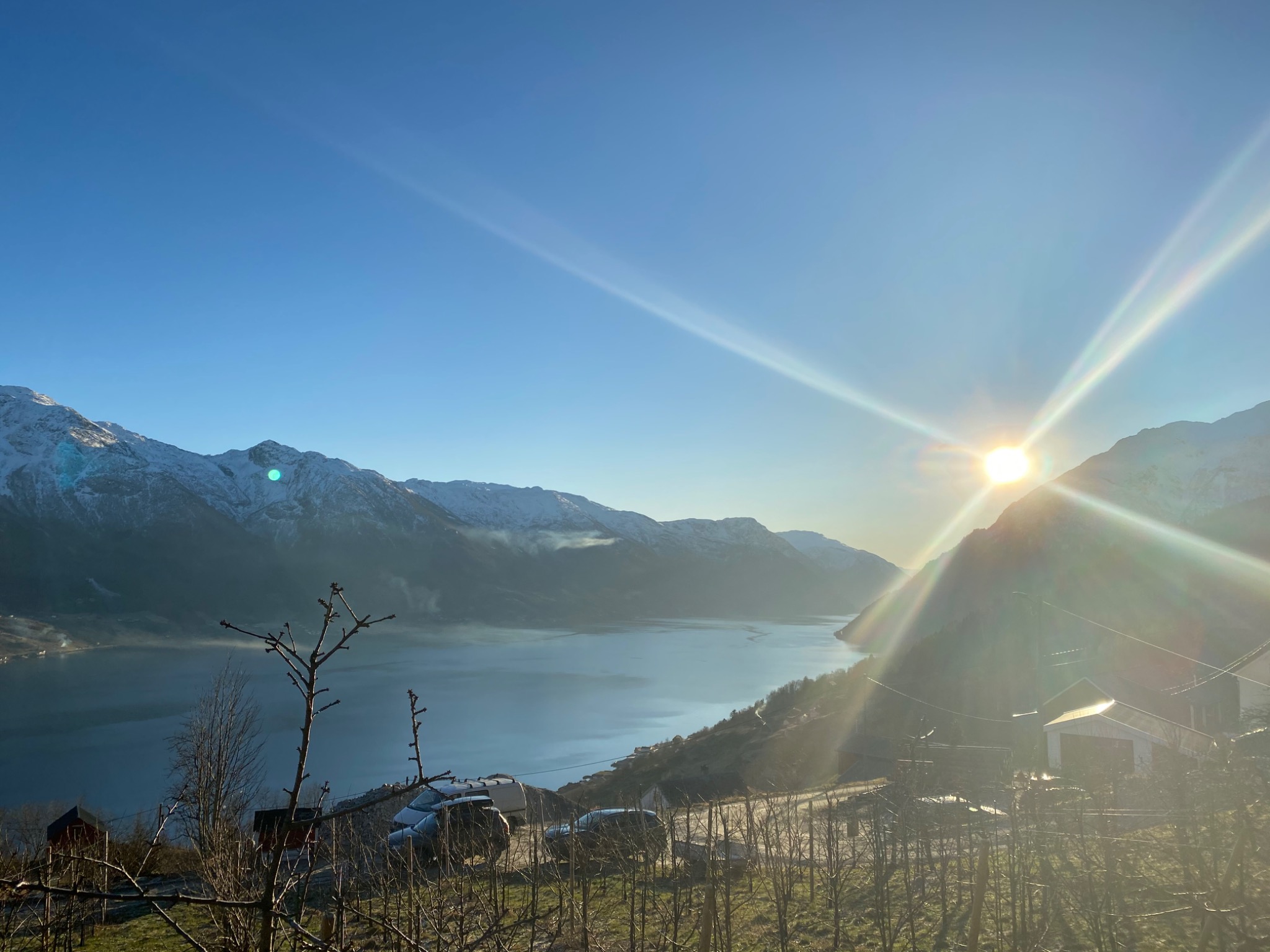A visit to the cideries of Norway's west coast

In Hardanger, a green and rugged region on the Norwegian west coast, the hills framing the picturesque fjords are crammed with apple trees.
For many years these trees have been producing fruit for the unrivalled apple juice that the region is famous for. Over the last 10 years or so however, the apple farmers have added a new drink to the mix — Cider.
Hardanger is where my father grew up, and I have spent many summers swimming in the cold fjord, eating local fruit by the water's edge, or hiking one of the many majestic peaks embellishing the region. However, it is not until recently, I went to explore the region's blooming cider scene.
I'm home for my summer holiday, and my father and I are driving from Odda — a small at the very end of Sørfjorden, a 38-kilometre long fjord and one of the innermost branches of the famous Hardangerfjord.
The roads are choppy and narrow, with steep hills to the left, and the deep blue sea to the right.
Along the way, we drive past rows upon rows of apple trees. It is August, so the trees are not in bloom, but I know from experience that the sight is dazzling in May when the trees are blossoming.

The first stop of our unofficial cider tour is Alde Sideri, located at Bleie Gard. With a view over the fjord, the farm is as taken out of a Scandinavian fairytale. There are old wooden houses, grass roofs and rocky mountains all around. We enter a barn, and the cleanliness of it tells me it has been a while since it housed any animals. Instead it functions as the cidery's tasting room.
I am handed a Champagne glass, because unlike English cider, this is not something to be drunk out of a pint glass. Norwegian cider, or Sider as it is is spelled here, is more delicate and aromatic than what the pub's of London will serve you.
First, we are trying Alde's flagship cider, named Alde Sider. It is bubbly, with a beautiful yellow colour. There is a strong, clean scent and taste of crisp apple. It is quite dry, refreshing, and very thirst-quenching.
To make their cider, Alde starts by making apple juice. Then, they transfer the juice to steel tanks alongside sugar and yeast to ferment. Once the fermentation has started, they decrease the temperature of the steel vessels, letting it develop slowly to retain the refreshing apple aroma. Finally, they add a bit of carbon dioxide to make it bubbly. This is a pretty normal way of making Norwegian cider.
We carry on with our tasting, trying Alde's rosé cider. While it is still mainly apple-based, it gets its pink colour from a small portion of raspberries. It is a bit sweeter than the first cider, and you can really taste the additional red fruit flavours. Another refreshing beverage.
Lastly, we taste Svans. It is made by freezing the original apple juice and then defrosting it, a process which concentrates the acidity and the sugar. It consists of twice as many apples as a normal cider, according to the producer, and the result is heavenly. Significantly sweeter than the other two and a lot more powerful flavour profile — this is a lovely drink. The sweetness is balanced out by the refreshing acidity, and the intense apple aroma.

We drive on, taking a left and continue further up the fjord-bank, about 220 metres above sea level, to Kvestad Sideri. We step into a beautiful farm yard, with everlasting rows of fruit trees. In addition to apples, Kvestad grows a number of other fruits, including the best dark cherries I have ever tasted.
Kvestad produces a number of ciders, including a few single-variety ciders, such as their Adelstein cider made from 100% Gravenstein apples.
We start by tasting their 1808 cider, a half dry, sparkling cider made from four different varieties. It has a beautiful yellow colour and a lovely scent of fresh apples — maybe even a hint of pear.
Next up is their Jubeliums rosé cider. Like Alde's rosé, apple is still the main fruit, but instead of raspberries, Kvestad has used redcurrant and cherries to give it that beautiful pink colour. Quite dry, fruity, and refreshing, which would make it a perfect aperitif.
Lastly, we are tasting their Adelstein cider. Less sweet than 1808, but there is still some residual sugar, balanced out by the crisp acidity. Very fruity, with a clean and pleasant apple flavour.

We drive on, back down to the fjord-edge, and towards Åkre Gård where producer Edel has been producing cider for 10 years.
Among the most innovative cideries in Hardanger, Edel produces some really interesting beverages, for example ciders made using the traditional Champagne method.
We are first showed around in their distillery where they are making spirits from various fruits, including apple, plums, and pears.
Then we walk up to their tasting room. A wooden barn with cider-filled barrels decorating the room. The wooden table and sheepskin on the benches, gives room personality and a warm and cosy atmosphere.
We start by tasting Edel Klassisk, which is a refreshing, dry, and easy-going apple cider. It is bubbly, as a result of a second fermentation in steel-tanks, also called the Charmat method — the same method used to make Prosecco. As with the other ciders we have tried today, this one is crisp, apple-y, and delicious.
Then we move on to their Edel Rosé, which has got its colour by macerating the raspberries during the second fermentation. As with Edel Klassisk, this one too was made using the Charmat method. The drink is summery with a lovely hint of raspberry.
Then we move onto to Edel's more inventive products. First, their pét-nat apple cider of Rubinstep apples, which is a winter apple harvested from November to January. It is fermented twice, the last one in the bottle. With a hazy yellow colour, it reminds me a bit of a natural wine. The same goes for the taste, which is of ripe apples and a hint of caramel. Delicious.
The last one we try at Åkre Gård is Edel Sider Metode Tradisjonell Fyldig, an apple cider made using the Champagne method. It is greenish yellow in colour and the nose is mainly apple, but with a nutty hint and even a bit of autolysis. It is dry with refreshing acidity, and the flavour is more complex than ordinary ciders. This one was certainly a highlight for me.

Lastly, we drive out to Aga and Aga Sideri. The farm is only 100 metres away from the historic Agatunet, one of the few remaining and the largest listed historic hamlet in Norway. Some of the buildings date all the way back to 1220.
At the farm, we start by tasting their Lagmann cider. It has some sweetness to it, which is nicely balanced by the acidity. On the nose, it is fruity with hints of yellow apples. It tastes of crisp, almost sour apples and it has a lingering sweetness.
Then we move on to their cider called Bøddel. It has a greenish yellow colour and a beautiful scent of ripe apples, pears, and even some green herbs. It is a dry, sparkling cider and it feels fuller than the previous one. It tastes of ripe apples, pears, and has a slight nuttiness to it too.
The last cider we try is one I am quite familiar with because it is one of my favourites. It is called Humlepung and is made with the addition of hops. The hoppiness gives a slightly different flavour profile to many of the other ciders, with notes of lychee and, obviously, hops. The flavour is of ripe apples, some citrus and floral notes, as well as hops and herbs. It is refreshing and the acidity balances out the residual sugar. Humplepung has been my go-to cider, and tasting it again now, I have to say that I have excellent taste.
Post a comment